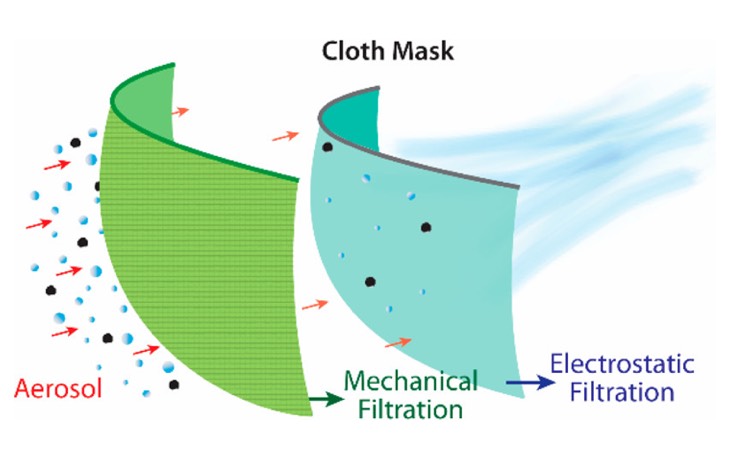Demand for face masks is high, but until now, it’s been hard to know what materials work best for the ‘cloth face coverings’ the CDC recommends all Americans wear in public. We know that the tiniest droplets of SARS-CoV-2, called aerosols, can easily make their way through cloth fabrics. But with N95s in short supply and needed in hospitals, cloth face coverings are all most of the American public has.
Now, a new study published in ACS Nano suggests that a combination of common household fabrics is the best way to filter out aerosols in a well-fitted homemade mask. You just have to be willing to cut up a prom dress.
The researchers collected household fabrics like cotton, chiffon, flannel, and silk and set them up both alone and in combinations. They then used a fan to blow aerosols (from 10 nm to 6 μm in diameter) at the cloth. The fan was set to a speed that mimicked human breath.
Developing the most efficient mask
There’s one cloth mask that performed almost as well as the material used in N95 masks. A combination of polyester-spandex chiffon and tightly-woven cotton filtered out between 80 and 99 percent of aerosol particles.
Here’s the recipe. First, the researchers suggest using a single layer of a tightly-woven cotton sheet. Then, add two layers of polyester-spandex chiffon. Chiffon is the material often used in evening gowns, so it could be worth cutting up an old prom dress.
If prom dresses are in short supply, the researchers found that natural silks and flannels combined with cotton performed almost as well. They also suggest using a cotton quilt that has a combination of cotton and polyester batting.
The main takeaway: a single layer of fabric is just not effective enough. While some of the fabrics in a single layer were able to defend against 95 percent of the largest particles, some single-layer fabrics only blocked 5 percent.
For cotton masks, the key appears to be thread count. When the cotton fabrics in the study were tightly woven, they filtered much better. That’s because cotton serves as a mechanical barrier to aerosols. Cotton combines well with chiffon and silk because they provide a different kind of barrier: an electrostatic one.
Be wary of gaps
The study provides solid numbers to back up what we’ve known for some time now. When a mask doesn’t fit properly, it’s less effective. Gaps of just 1 percent in the sides or nose can make a mask up to 60% less effective. Meaning, all those gains from choosing the right fabric combination will disappear if a mask doesn’t fit properly.
Researchers suggest looking for mask designs that allow for the proper fit while also giving exhaled air a way out.


You are reporting the comment """ by on